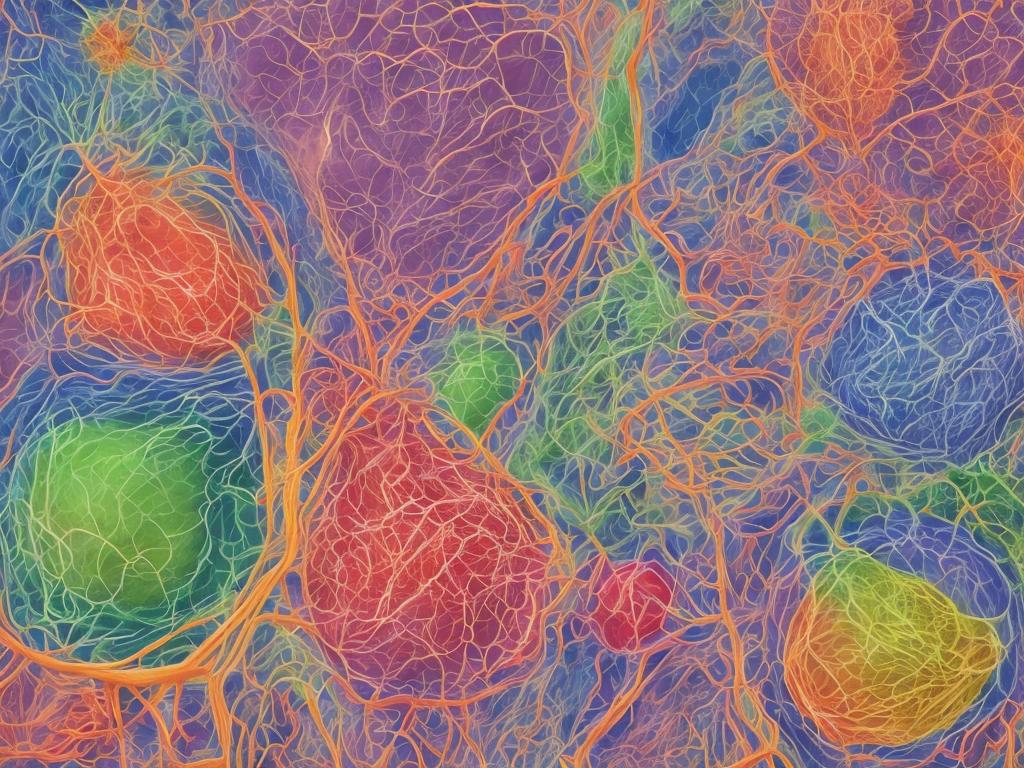
Our body is composed of numerous organs and tissues, each having a specific function in maintaining a healthy life. Glands are among these organs that play a crucial role in the regulation of the body system. There are two types of glands in the body - endocrine and exocrine glands. Although both types of glands secrete substances into the body, their mode of transport and target organs differ. In this article, we’ll discuss the differences between endocrine and exocrine glands.
What Are Glands?
Glands are specialized organs that are responsible for secreting different types of substances, such as hormones, enzymes, and sweat. The secretions they produce are essential for maintaining a balance within the body. Some glands are in pairs, while others are solitary.
Endocrine Glands
Endocrine glands are ductless glands that secrete hormones directly into the bloodstream. They release hormones that act as chemical messengers, which travel through the blood to reach their target organ. The role of endocrine glands is to regulate various body functions, including growth and development, metabolism, and sexual function.
The endocrine glands include the pituitary gland, thyroid gland, adrenal gland, and pancreatic gland, among others. The pituitary gland is known as the master gland of the body because it controls many of the other hormone-producing glands. The thyroid gland produces hormones that regulate metabolism, while the adrenal gland produces adrenaline, which has a role in the body’s response to stress. The pancreas produces insulin and glucagon, which helps control blood sugar levels.
Endocrine glands are sensitive to changes in the body, such as a drop in blood sugar levels or an increase in blood pressure. Once they detect these changes, they produce hormones to counteract them, bringing the body back into balance. For example, when blood sugar levels drop, the pancreas releases insulin, which causes the liver to convert glycogen into glucose, thereby raising blood sugar levels to normal.
Exocrine Glands
Exocrine glands, on the other hand, secrete their substances through ducts into body cavities or the surface of the body. They produce substances that aid in the digestion of food, lubricate organs, and protect the body against pathogens. Examples of exocrine glands include sweat glands, salivary glands, and mammary glands.
The sweat glands, which are located all over the body, secrete sweat through ducts to the surface of the skin. This helps to regulate body temperature, as the evaporation of sweat cools the body. The salivary glands produce saliva, which contains enzymes that help digest food in the mouth. Mammary glands in females, produce milk that is secreted through the nipple to nourish infants.
The function of exocrine glands is to help maintain homeostasis, which is the body’s internal stability. They secrete substances that aid in digestion, respiration, and the maintenance of the body’s pH balance. They also produce mucus that protects organs from injury or infection.
Differences Between Endocrine And Exocrine Glands
1. Mode of Secretion
The primary difference between endocrine and exocrine glands is their mode of secretion. Endocrine glands secrete their products directly into the bloodstream, which carries them to their target organ. Exocrine glands, on the other hand, secrete their products through ducts, which carry them to the surface of the body or into body cavities.
2. Target Organs
Another difference between endocrine and exocrine glands is their target organs. Endocrine glands secrete hormones that travel in the blood to reach their target organs, which are often located far from the site of hormone production. Exocrine glands, on the other hand, secrete their products onto the surface of the body or into body cavities, where they act locally.
3. Ducts
Endocrine glands do not have ducts, while exocrine glands do. Endocrine glands secrete their products directly into the bloodstream. They are highly vascularized to facilitate the easy absorption of hormones into the blood vessels. In contrast, exocrine glands have ducts that carry their secretions to the target organs.
4. Products Secreted
Endocrine glands secrete hormones, which are chemical messengers involved in regulating various body functions. Exocrine glands, on the other hand, secrete enzymes, mucus, sweat, and other substances that aid in the digestion of food, lubrication of organs, and protection of the body from pathogens.
5. Regulation
The regulation of endocrine and exocrine glands differs. Endocrine glands are mainly regulated by feedback mechanisms involving hormones, while exocrine glands are regulated by nervous cooperation and secretory stimulation.
Conclusion
In conclusion, endocrine and exocrine glands are two types of glands in the body that differ in their mode of secretion, target organs, presence of ducts, products secreted, and regulation. Endocrine glands secrete hormones that are transported through the bloodstream to their target organ, while exocrine glands secrete their products through ducts to the surface of the body or into body cavities. While endocrine glands play a crucial role in regulating various body functions, exocrine glands aid in digestion, lubrication of organs, and protection of the body from pathogens.
 Self-Instruct
Self-Instruct